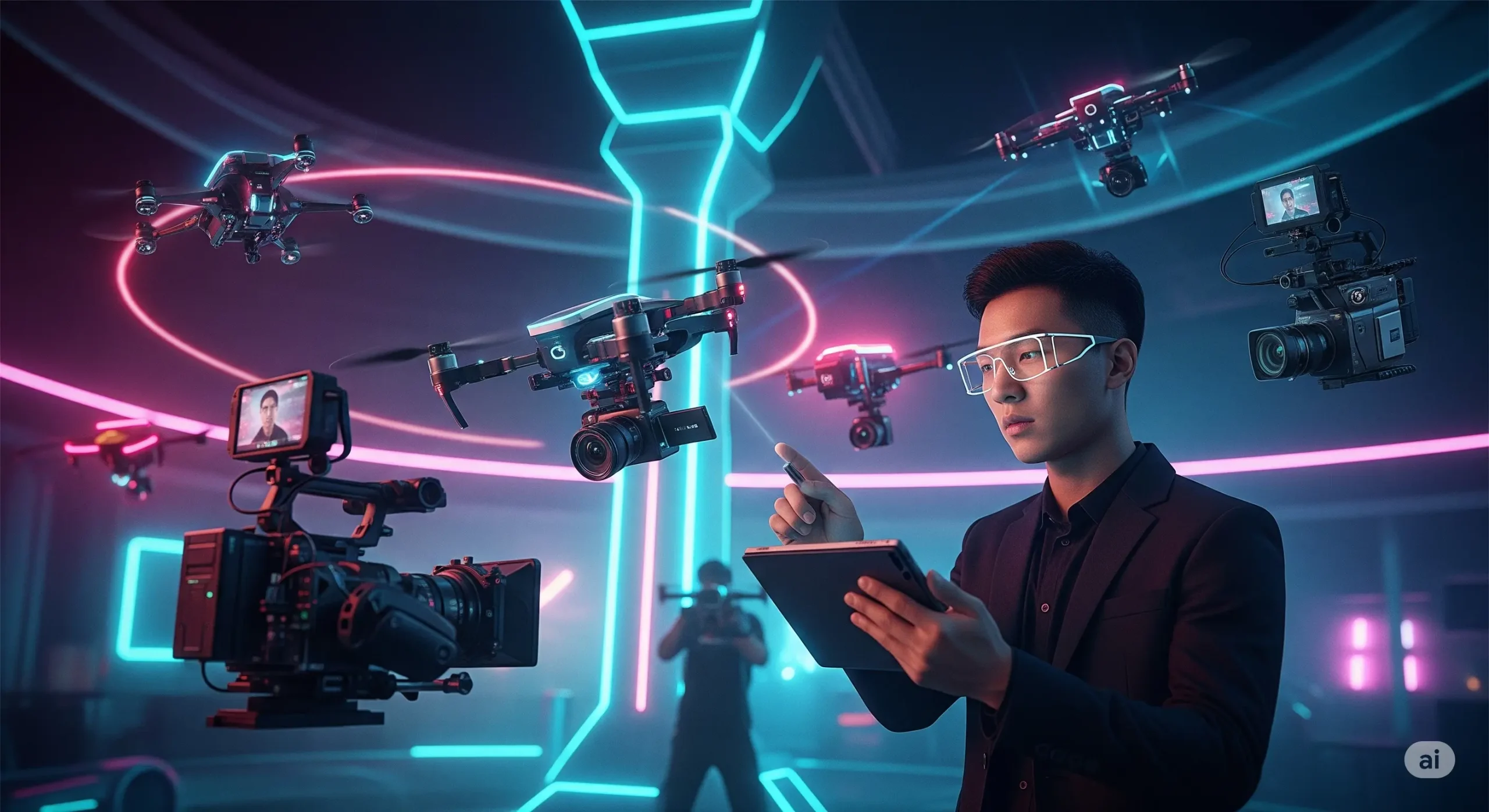The Art of Camera Work
A Director’s Guide to Hollywood-Caliber Cinematography for the Age of AI
AI is your powerful new brush, but you are still the director. It is you who decides what to paint and how. Cinematography is the language of light and shadow; camera work is its grammar. With this guide, you will learn to speak it fluently and tell stories that move the world.
01 Commanding Space — Physical Moves
Dolly In
Physically moves the camera closer, immersing the audience in a character’s internal world or focusing their attention on a critical detail. It says, “Look at this.”
▶︎ Prompt Example:
Slow dolly in on her face as her expression hardens with new resolve. Cinematic, dramatic lighting.
Dolly Out
Moves the camera away, revealing the character’s environment and often creating a sense of isolation, loneliness, or the grand scale of their situation.
▶︎ Prompt Example:
Slow dolly out to reveal the vast, empty, and silent red desert surrounding him, emphasizing his isolation.
Tracking Shot
Moves alongside the subject, creating a sense of energy, participation, and immediacy. It puts the audience right in the middle of the action.
▶︎ Prompt Example:
Side-view tracking shot of two spies walking briskly through a crowded 1960s airport terminal.
02 Directing the Gaze — Rotation
Pan
Rotates the camera horizontally, mimicking the natural turn of a head. Used to reveal information, follow action, or show the expanse of a location.
▶︎ Prompt Example:
Slow pan right across a serene Japanese zen garden, from a stone lantern to a raked sand pattern.
Tilt
Rotates the camera vertically. A tilt up can convey power, scale, or authority. A tilt down can reveal a detail or follow a character’s gaze.
▶︎ Prompt Example:
Start on a character’s dusty boots, then tilt up slowly to reveal their full epic fantasy armor.
03 The God’s-Eye View — Crane/Jib
Jib Up / Down
A smooth, arcing vertical movement. Often used to create a sense of release, victory, or emotional swell, leaving the scene with a beautiful, floating feeling.
▶︎ Prompt Example:
A couple kisses, the camera gracefully jib ups high above, showing them in the city.
Crane Shot
The “God’s-eye view.” A large, sweeping movement that can establish a scene, convey a sense of destiny, or show the grand, overarching context of the action.
▶︎ Prompt Example:
Epic high-angle crane shot flying over a massive, bustling medieval port city.
04 Visual Tricks — Lens Work
Rack Focus
Shifts the plane of focus from one subject to another, forcefully directing the audience’s attention and thoughts. It silently says, “This is what matters now.”
▶︎ Prompt Example:
Rack focus from the detective’s face in the foreground to the crucial evidence in the background.
Zoom vs. Dolly
Dolly In:
Feels like the viewer is physically walking closer. The spatial relationship between objects remains constant, creating a natural, immersive feeling.
Zoom In:
Feels like the subject is being pulled toward the viewer. The background appears to compress, creating an intentional, sometimes unsettling, sense of focus.
Pour Your Soul Into the Prompt
The true magic isn’t in the AI. It’s in your intent. “Why choose this movement?” Answering that question with your own story and emotion—that is the work of a director. That is the source of creation. Now, take this guide, and begin to tell your story.


コメント